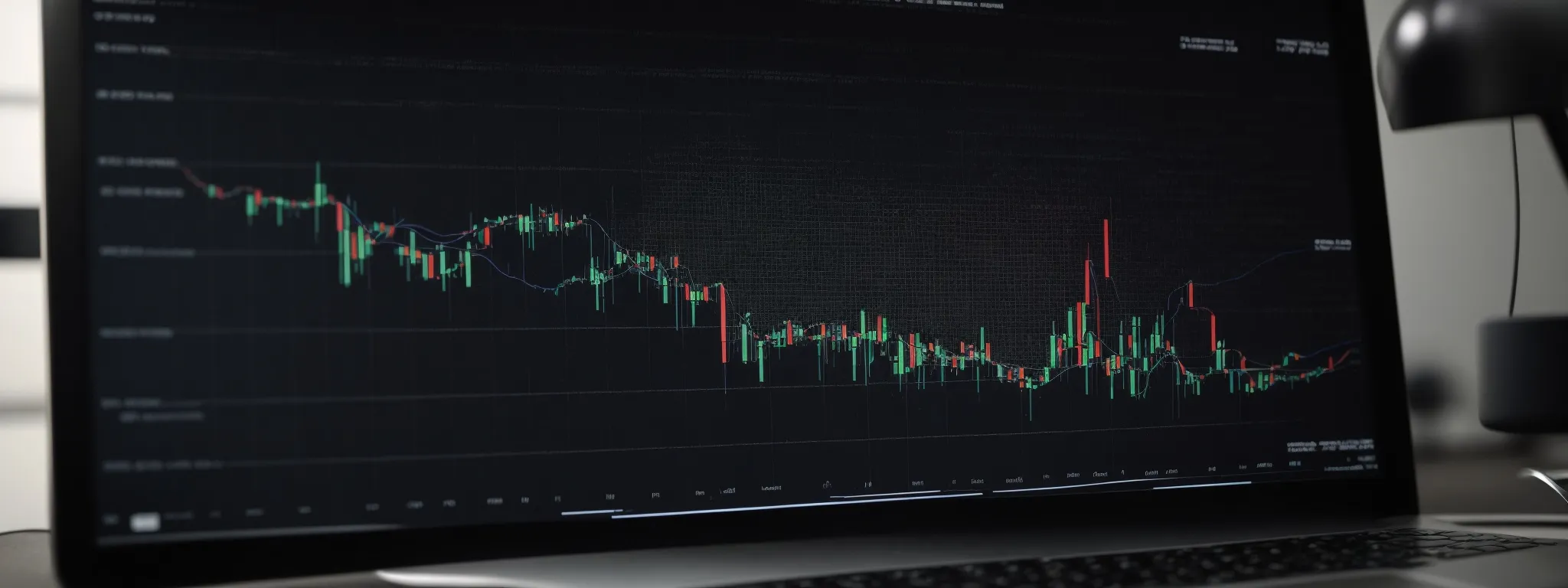Organic Search in Google Analytics
Understanding Organic Search in Google Analytics Organic search stands as a cornerstone of digital visibility, serving as a litmus test for the effectiveness of a website’s SEO […]
Understanding Organic Search in Google Analytics
Organic search stands as a cornerstone of digital visibility, serving as a litmus test for the effectiveness of a website’s SEO strategy.
By tapping into Google Analytics, website owners gain valuable insights into how users discover their content through non-paid search results.
Decoding this data allows businesses to refine their marketing strategies, tailoring them to the behavioral patterns and preferences of their audience.
Understanding the interplay between organic search and user engagement is essential for driving traffic and increasing a website’s authority.
Keep reading to unveil the secrets of leveraging organic search analytics to elevate your online presence.
Key Takeaways
- Organic Search Traffic Is a Key Indicator of SEO Effectiveness and Website Visibility
- Accurate Analysis of Organic Search Data in Google Analytics Aids in Refining SEO Strategies
- Monitoring and Understanding Seasonal Patterns in User Behavior Can Guide SEO Adjustments
- Dissecting Organic Search Traffic Helps Anticipate Future Market Demands and User Interests
- Conversion Rates From Organic Traffic Measure the Tangible Business Impact of SEO Efforts
Defining Organic Search Within Google Analytics

At the core of digital marketing lies an essential concept: organic search.
It forms the backbone of web traffic for countless websites, and understanding its nuances is pivotal for strategizing effective search engine optimization.
By dissecting the term ‘organic search,’ businesses gain clarity on how Google Analytics deems and records these visitor interactions as traffic sources free from direct advertising influence.
The infusion of organic search insights into web analytics enables website owners to refine their SEO strategies, aligning marketing efforts closely with user search behavior and ultimately enhancing search engine result pages (SERPs) visibility.
Unpacking the Term ‘Organic Search’
When professionals mention organic search in the context of Google Analytics, they refer to website visits generated through search engine result pages without the aid of paid advertisements. This form of traffic acquisition encapsulates a user’s natural journey from inputting a search query in Google to clicking on a hyperlink that leads directly to a website.
Organic search distinguishes itself from other channels such as direct navigation, referral traffic, paid search, or visits from social media platforms. Its significance is underscored by the weight search engines place on relevance and domain authority, factors that elevate a site’s standing naturally in a searcher’s quest for information.
How Google Analytics Classifies Organic Traffic
Google Analytics categorizes website traffic through a Sophisticated Array of Definitions and parameters, systematically recognizing organic traffic as originating from search engine results. This process hinges on the detection of unique parameters within the URLs that users arrive from, identifying them as search queries rather than referrals or direct visits.
The attribution of a session to the organic search channel in Google Analytics is contingent on the absence of parameters that denote paid or referral sources. This ensures accuracy in reporting and allows marketers to assess the true impact of their SEO efforts on web traffic:
- Organic Search: A user types a query into a search engine and clicks on a non-advertised result.
- Direct Navigation: A visitor arrives at a site by typing the URL directly into their browser or using a bookmark.
- Paid Search: Sessions initiated through paid advertisements such as text ads or search ads.
- Referral Traffic: Visitors who arrive from other websites through hyperlinks.
- Social Traffic: Users who find a website through social media platforms.
The Role of Organic Search in Web Analytics
Organic search functions as a critical metric within web analytics, offering invaluable insights into the performance and reach of a business’s SEO tactics. By tracking organic traffic, analysts can discern patterns in user engagement, evaluate the health of the SEO content strategy, and identify opportunities for improvement that could, in turn, escalate a site’s prominence on SERPs.
Essential to any marketing strategy, the role of organic search in web analytics transcends mere traffic analysis. It provides website owners and SEO professionals with the data necessary to understand the consumer journey, equipping them to craft content that aligns with user intent and to optimize Search Campaigns for maximum impact, ultimately driving sustainable growth in website traffic.
Identifying Organic Traffic Sources in Google Analytics

The pursuit of optimizing a website’s visibility culminates in a critical analysis of traffic sources—particularly separating organic visitors from those arriving via alternative pathways.
Mastery of this aspect within Google Analytics is fundamental for businesses aiming to untangle the web of user interaction and harvest valuable insights.
Initiating this journey involves the imperative of pinpointing organic traffic effectively—a task that necessitates familiarity with the application’s reporting features and an analytical mindset geared towards dissecting the wealth of data available.
As the proceeding conversation unfolds, attention will converge on the methods for distinguishing organic from non-organic traffic, navigating through the Organic Search Report, and thoroughly appraising traffic sources to secure dependable, actionable intelligence.
Distinguishing Organic From Non-Organic Traffic
The imperative of differentiating between organic and non-organic traffic lies at the heart of a refined SEO strategy. As site visitors arriving through organic channels indicate the effectiveness of search engine optimization, tracking and analysis of these visitors becomes a benchmark for measuring SEO success.
Analysts leverage Google Analytics to scrutinize the origins of web traffic meticulously: the aim is to attribute each session to its rightful source. By isolating organic traffic, website owners can gain a precise understanding of their visibility in search engines:
| Traffic Source | Definition | SEO Relevance |
|---|---|---|
| Organic Search | Sessions from search engine results, excluding paid promotions | Direct reflection of SEO efficacy |
| Direct Navigation | Visitors entering a website directly by URL or bookmark | Indicative of brand recall and user loyalty |
| Paid Search | Traffic from paid advertisements like display ads or search ads | Measures the impact of search campaigns |
| Referral Traffic | Visitors redirected from other websites via links | Assesses the strength of backlink profile |
| Social Traffic | Users discovering a website on social media platforms | Evaluates the engagement on social channels |
Navigating to the Organic Search Report
Accessing the Organic Search Report within Google Analytics is a process that begins with the selection of ‘Acquisition’ from the main menu, followed by ‘All Traffic,’ and then ‘Channels.’ Within this section, analysts and marketers can peruse the ‘Organic Search’ segment, yielding a comprehensive view of traffic arriving from search engines without the influence of paid campaigns.
The Organic Search Report stands as a critical resource, revealing not only the volume of sessions from natural search results but also the behavioral data associated with those sessions. By examining this report, professionals are equipped with actionable insights, allowing for refined adjustments to SEO strategies and a deepened understanding of search query impact on web traffic.
Analyzing Traffic Sources for Accurate Data
Analyzing traffic sources demands rigorous attention to detail and a commitment to extracting the most meaningful insights from data. Paradoxically, the simplicity of the term ‘organic search’ belies the complexity of the digital ecosystem it represents, making careful scrutiny of traffic sources crucial for an accurate assessment of SEO performance and opportunities.
Professional analysts and marketers, by focusing on patterns and anomalies within the traffic acquisition report, can discern user intent and behavior, leading to strategic decisions that align with the intricacies of organic search. This analytical approach ensures data-driven decisions anchor the marketing strategy, positioning a business to capitalize on the nuances of search engine user behavior effectively.
Examining Key Metrics for Organic Search Analysis

An integral component of the digital marketer’s arsenal is the capacity to dissect and understand the metrics associated with organic search within Google Analytics.
This analysis encompasses more than simply acknowledging the influx of site visitors; it entails a meticulous investigation into the quality and behavior of traffic resulting from search engine queries.
Professionals examine various indicators, such as traffic volume from organic search, to gauge brand visibility; they scrutinize bounce rates to deduce the relevance and engagement of content presented to organic search entries; and they diligently track conversion rates to measure the effectiveness of organic search in achieving business objectives.
Cumulatively, these metrics paint a detailed portrait of a website’s organic search health and its role in the larger framework of user acquisition and retention strategies.
Understanding Traffic Volume From Organic Search
Assessing the volume of traffic originating from organic search queries is pivotal, as it provides a quantitative measure of the website’s visibility and reach within search engine result pages. Website owners and SEO experts keep a pulse on this metric utilizing tools like SearchAtlas SEO software, enabling them to track fluctuations in web traffic and adjust their SEO strategies accordingly.
Among the plethora of metrics available for granular analysis, the volume of organic search traffic stands out, giving insight into the effectiveness of the content strategy and keyword optimization. LinkGraph’s SEO services emphasize the critical nature of this data point, as it often correlates with successful indexing and serves as a benchmark for organic growth over time.
Analyzing Bounce Rate for Organic Search Entries
Analyzing the bounce rate attributed to organic search entries grants insight into user engagement and the immediate value visitors perceive upon landing on a web page. A low bounce rate typically indicates that the content effectively captures and retains the interest of users who arrived through organic search, while a higher rate may signal an opportunity to improve relevancy and user experience.
Professional SEO Strategists from LinkGraph leverage bounce rate data to optimize on-page SEO services, ensuring that site visitors from organic search find the content they expect and are encouraged to explore further. Details such as the readability of text, the strategic placement of hyperlinks, and the overall website navigation structure are scrutinized to enhance user interaction and diminish bounce rates:
| SEO Metric | Purpose | Impact on Organic Search |
|---|---|---|
| Bounce Rate | To measure the percentage of single-page visits | Indicative of content relevancy and user engagement |
Tracking Conversion Rates of Organic Visitors
Monitoring the conversion rates of organic visitors is essential to comprehend the true value that non-paid search brings to a website. It signifies the effectiveness of SEO in not only attracting site visitors but also in driving them towards completing a desired action, be it a purchase, a signup, or another form of conversion.
By tracking these rates, businesses utilizing LinkGraph’s SEO services can connect organic traffic volume to tangible outcomes, thereby underpinning the ROI of their SEO investments. Establishing robust conversion tracking mechanisms within Google Analytics is crucial for gaining explicit insights into the customer journey from organic search to conversion:
| SEO Metric | Utility | SEO Value |
|---|---|---|
| Conversion Rate | To ascertain the percentage of organic visitors who take a desired action | Translates SEO traffic into business results |
Improving Site Visibility Through Organic Search Data

Capitalizing on the wealth of data provided by Google Analytics, professionals can significantly enhance their website’s visibility by dissecting and deploying organic search intelligence.
Identifying high-performing organic keywords forms the bedrock of precision-targeted content strategies, enabling businesses to cater to the precise needs of their audience.
Analytics become a compass in this journey, guiding content optimization and user experience refinements.
This data-driven approach ensures that every alteration or innovation is rooted in concrete user behavior patterns gleaned from organic insights, laying a foundation for measurable growth in site visibility and user engagement.
Identifying High-Performing Organic Keywords
Determining which keywords drive the most valuable traffic to a website is a cornerstone of SEO optimization. By using tools such as Google Analytics and LinkGraph’s SearchAtlas SEO software, businesses accurately pinpoint the search terms that not only bring in the most site visitors but also engage and convert at higher rates.
High-performing keywords are often those that align closely with the user’s intent, reflecting a deep understanding of the target audience’s needs and preferences. LinkGraph’s SEO services focus on a thorough analysis of these keywords to optimize web content, ensuring that the website resonates with its audience and ranks prominently on search engine results pages.
Leveraging Analytics to Optimize Content Strategy
Leveraging the insights garnered from Google Analytics, effective content strategies are sculpted with precision, ensuring each piece serves the search intent and behavior patterns of the target audience. This strategic utilization of analytics informs the creation of content that ranks well, engaging and providing users with the information they are seeking, which in turn bolsters site visibility and organic reach.
LinkGraph, with its adept use of cutting-edge SearchAtlas SEO software, delivers customized analytics intelligence that enables continuous refinement of on-page SEO services. This Dynamic Process, Driven by Data, steers content development in a direction that is both aligned with SEO content strategy and adaptable to evolving search trends, maximizing opportunities for improved SERP rankings and enhanced organic visibility.
Enhancing User Experience Based on Organic Insights
Organic search data reveals a treasure trove of user behavior that can dramatically inform User Interface and Experience Enhancements. Professionals at LinkGraph utilize these organic insights to sculpt the user journey on a website, ensuring seamlessness and intuitiveness in navigation that significantly diminishes user friction and fosters positive user experiences.
This refined understanding of organic user interaction informs the deployment of design changes and functionality improvements tailored to the needs and preferences of the site visitor. By aligning the website’s user experience with data-driven insights from Organic Search Analytics, businesses effectively increase visitor satisfaction and cultivate a conducive environment for higher engagement rates and longer session durations.
Integrating Organic Search Insights for SEO Strategy

Organic search remains a cornerstone in the edifice of effective Search Engine Optimization strategies, providing a beacon that guides the journey across the ever-changing terrain of digital marketing.
As professionals imbue their SEO tactics with the insights gleaned from Google Analytics, there emerges a refined appreciation for organic search data.
This approach is the linchpin in setting up pertinent goals that echo the resonance of organic traffic, using the treasure trove of data to refine SEO decisions, and maintaining a vigilant watch on progress to facilitate the nimble adjustment of tactics.
In an ecosystem where adaptability is key, integrating organic search insights becomes the crux of evolving SEO strategy, ensuring its alignment with user search behavior and market dynamics.
Setting Up Goals Related to Organic Traffic
Establishing concrete goals in relation to organic traffic is essential for companies leveraging the insights gathered from Google Analytics to spearhead their SEO initiatives. Through setting up specific objectives, such as increasing organic traffic by a certain percentage or enhancing the ranking of particular keywords, businesses are able to create Measurable Benchmarks that direct and quantify their SEO successes.
With the implementation of these strategic goals, website owners from various industries are empowered to chart a course towards significant improvements in their online presence. The savvy application of such goals within an SEO framework provides a clear trajectory for assessing progress and adjusting tactics, ensuring a data-driven approach to heightening organic search visibility.
Using Organic Search Data to Inform SEO Decisions
Navigating the complex landscape of search engine rankings requires not just a proactive stance but a reactive finesse informed by actual data. LinkGraph’s SEO services skillfully harness the potency of organic search data, guiding each decision towards Optimizing Site Architecture, tweaking meta tags, and refining anchor text distribution.
It is critical for companies to translate the organic search insights provided by tools such as SearchAtlas SEO software into actionable tasks. These tasks range from augmenting a website’s content to resonating more deeply with the target audience, to adjusting keyword strategies that align with the evolution of search trends, thus ensuring that SEO decisions are not merely reactionary but are also proactively sculpting the brand’s digital footprint.
Monitoring Progress and Adapting SEO Tactics Accordingly
Monitoring the trajectory of SEO performance hinges on the diligent review of organic search metrics within Google Analytics. As changes in search algorithms, competitor strategies, or user behavior emerge, the agility to adjust SEO tactics is paramount, ensuring that a website’s content and technical SEO remain efficacious amidst the flux of the digital landscape.
Professionals employ SEO reporting insights to gauge the potency of enacted strategies, leading to informed decisions that fine-tune on-page elements and reinforce the infrastructure supporting organic visibility. This consistent oversight affords businesses the foresight to pivot, enhancing their digital marketing efforts and maintaining an upward trajectory in search rankings.
Trends and Patterns in Organic Search Traffic

Grasping the intricacies of organic search not only involves analyzing immediate data but also deciphering the broader trends and patterns that emerge over time within Google Analytics.
Such an understanding proves critical as businesses seek to navigate the seasonal fluctuations that invariably shape organic search performance.
In light of this, professionals delve into comparing historical and current organic traffic data, carefully examining the ebb and flow to ensure a robust forecast of future performance.
Employing these insights allows for a dynamic and informed SEO strategy that anticipates and adapts to the market’s rhythmic pulse and user search behaviors.
Seasonality Effects on Organic Search Performance
The rhythm of consumer behavior influences organic search performance in distinct patterns, often aligning with seasons, holidays, or events. For many industries, specific times of the year catalyze fluctuations in search queries that can significantly impact organic search traffic and, by extension, web visibility.
Insightful analysis of this seasonality allows businesses to anticipate changes in user interest and adjust SEO strategies accordingly. Recognizing these patterns empowers marketers to tailor content and search campaigns, capturing the upticks in relevance and interest before competitors:
| Month/Season | Expected User Behavior | SEO Strategy Adjustment |
|---|---|---|
| Holiday Season | Increase in searches for gifts, recipes, and decorations | Enhance content related to holiday shopping and festivities |
| Back to School | Rise in searches for school supplies, clothing, and educational tools | Optimize content and keywords catering to educational needs and fashion |
Comparing Organic Traffic Trends Over Time
An astute examination of organic traffic trends over a designated timeframe can unveil patterns that guide the strategic finetuning of SEO practices. Placing current organic traffic under the microscope against historical data enables professionals to discern shifts in user behavior, market dynamics, and identify the efficacy of SEO measures undertaken.
Consequently, leveraging the insights from this comparative analysis assists in predicting future organic search performance, allowing businesses to proactively deploy optimized content strategies and technical SEO adjustments. Such forward-looking analysis aids in sustaining a website’s competitive edge in SERPs and adapting to the continuous innovation in search engine algorithms:
- Analyze year-over-year or seasonal organic traffic data to uncover underlying user interest trends.
- Quantify the success of past SEO strategies by measuring incremental changes in organic search traffic volume.
Recognizing Patterns to Forecast Future Performance
Recognizing trends and patterns in organic search traffic equips forward-thinking businesses to not just navigate but anticipate the shifting SEO landscape. Meticulous pattern analysis reveals signposts of future performance, where sustained surges or declines in keyword rankings signal opportunities or challenges ahead.
By synthesizing the threads of historical data, website owners forge Predictive Models that guide resource allocation and SEO focus. Identification of these patterns informs the creation of content calendars, technical SEO updates, and search campaigns poised to meet projected demands and user interests:
- Transition from reactive to predictive SEO tactics based on pattern analysis.
- Develop targeted content strategies informed by forecasted search behaviors.
Conclusion
Understanding organic search in Google Analytics is critical for shaping an effective SEO strategy.
It enables businesses to differentiate between traffic sources, ensuring that they focus on those users who arrive naturally through search engines, a key indicator of SEO success.
By diving into the Organic Search Report, businesses can evaluate the volume of organic traffic, analyze bounce rates for visitor engagement, and track conversion rates to measure the tangible impact of their SEO efforts.
Identifying high-performing organic keywords through analytics allows for precision-targeted content strategies that cater to user needs and improve SERPs visibility.
Leveraging data to optimize content, enhance user experience, and adapt SEO tactics in real-time helps businesses stay competitive in the ever-changing digital landscape.
Goals related to organic traffic, informed by data, ensure measurable sequences for SEO progression.
Furthermore, understanding seasonality effects and comparing organic traffic trends over time empowers businesses to proactively adjust their strategies.
Recognizing patterns helps in forecasting future performance, making SEO tactics not only reactive but predictive.
In conclusion, a thorough grasp of organic search data in Google Analytics provides an indispensable foundation for a dynamic and successful SEO strategy.



















































































